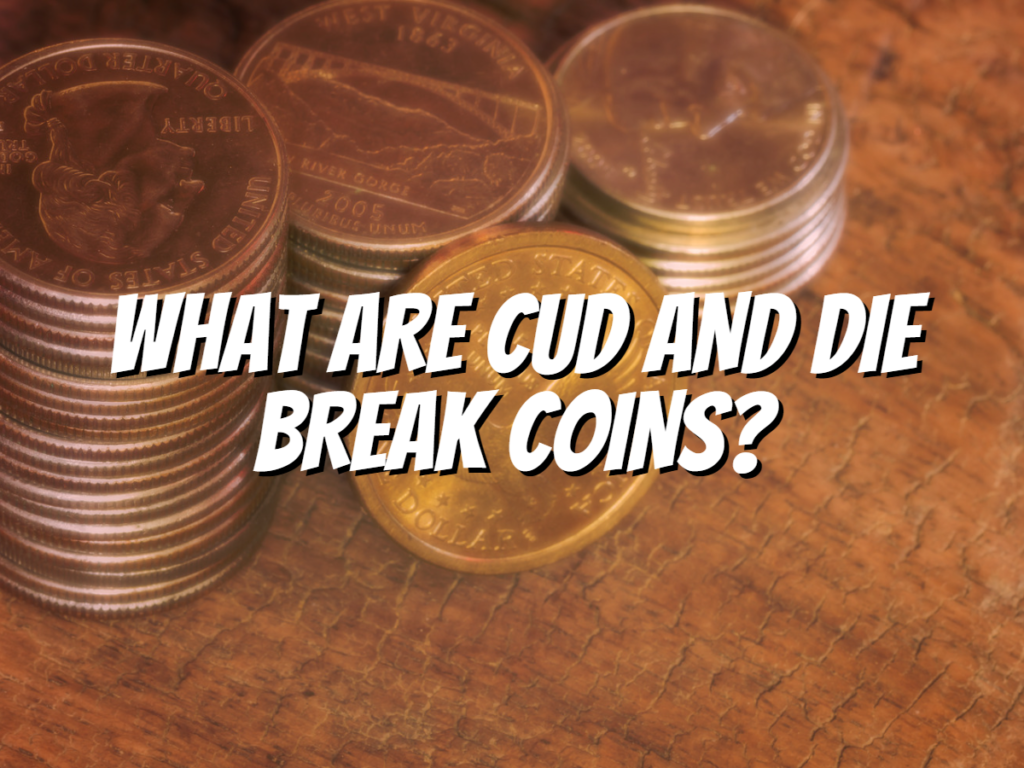What are cud and die break coins? Cud and die break coins are not just one of the most highly sought-after types of coins among collectors but also some of the most misunderstood.
Understanding these types of coins can help you better understand why they’re so valuable and how to tell whether or not you have one.
What are Cud and Die Break Coins?

A die crack is when the die cracks under the intense pressure applied during the minting procedure, leaving a tiny breach in the die.
The metal will fill in the crack if the broken die is used to manufacture coins again, leaving an elevated metal line in the completed coin.
Some collectors place a high premium on specimens with more noticeable die cracks and highly value them.
A cud is a kind of die flaw where the coin has elevated metal.
This accidental “bump” in the coin, which differs from a die crack in that it results from a dent or gouge in the die, allows the coin to fill in the gap during the minting procedure.
A little cud may appear to be a piece of metal that was attached to the coin somehow.
Although they are manufactured the same way as a cud, some numismatists disagree that these minor alterations can be considered one.
A noticeable cud resembles a blank area of a coin, typically towards the coin’s rim.
Difference Between Cud and Die Break Coins
- Cud coins are created when the dies to strike a blank, and the coin is not ejected but gets stuck in the die.
- A die break coin is a coin that has been struck by the dies but is damaged by a crack in the die.
Are Cud Coins and Die Break Coins Valuable?

Cud errors can add significant value to a coin or take away from its worth.
Dramatic cud mistakes that are visible to the human eye will increase the coin’s value.
Small mistakes that require magnification to see can reduce the coin’s value. Proof coins with cud faults can be extremely valuable.
The United States Mint’s highest-quality coins are proof coins.
Each Proof coin is struck several times at the mint before being manually removed from the coining press.
The coin is examined for flaws when the coin press operator removes it.
Values for die breaks mostly rely on the error’s size, position, and amount, as with many different sorts of faulty coins.
The coin’s value often increases with die break size, prominence, or intrusion.
The following factors will determine whether you possess a die crack coin worth $5 or a really valuable error coin for $100:
- Location of the die break.
- Size of the die break.
- If experts on error coins deem that die break to be a rarity.
- If numerous collectors are interested in that particular variety.
Before you go…
To summarize, cud and die break coins are both valuable. However, their values depend on the type of coin, how much wear it has received over time, and how much damage was done to the die when it struck the coin.
Check out my next article: “What are the Different Types of Coin Errors.”
Related Articles:

